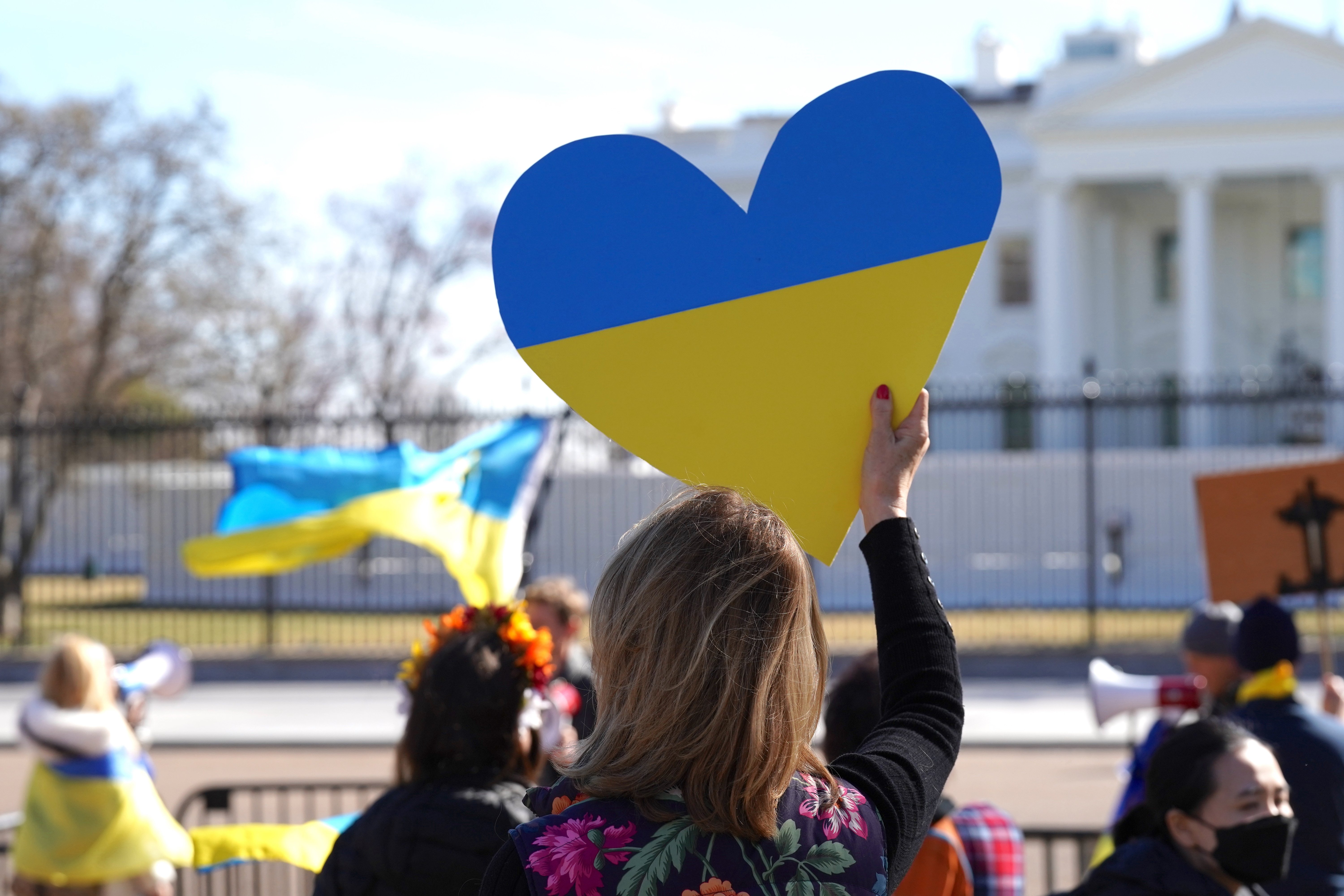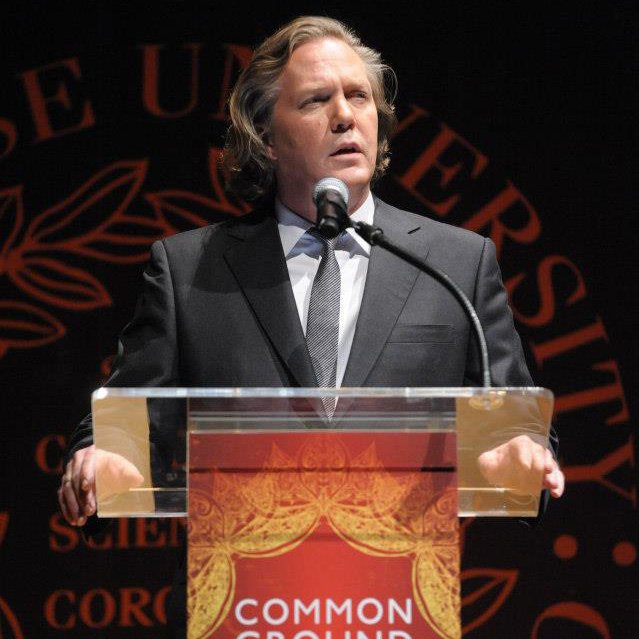Revisiting the Perpetual Peace Project During the Russia-Ukraine Conflict
The 2008 Humanities Center initiative generated a framework for a global peace movement.

As headlines about Russia’s invasion of Ukraine continue to dominate the news, many have taken to social media, making pleas for peace. But as history has shown, with each new year comes a new conflict. Is international peace even achievable?
To take on this age-old question, in 2008, a global initiative called the Perpetual Peace Project (PPP) was formed by the Syracuse University Humanities Center in partnership with the Centre for Humanities, Utrecht University, city of Utrecht, the Netherlands; European Union National Institutes of Culture, International Peace Institute, Slought Foundation and United Nations University. PPP was inspired by Immanuel Kant’s 1795 essay Perpetual Peace, where the famous philosopher outlines steps for establishing international peace and even prescribes the creation of a “Peaceful League of Nations,” a precursor of the United Nations. PPP’s goal was to develop a framework for a peace movement, exploring questions about how such a movement might occur. The project connected academics, policy makers and diplomats, sparking conversation between philosophers who engage with the idea of peace and world leaders who participate directly in the world of geopolitical conflict.
Gregg Lambert, Dean's Professor of the Humanities and founding director of the Syracuse University Humanities Center in the College of Arts and Sciences, was one of the project’s creators. He along with artist and curator Aaron Levy (Slought Foundation) and diplomat Martin Rauchbauer (Austrian Embassy) started the PPP in response to what they said was an absence of any serious discussion of the idea of peace from their cultural and political institutions, even though wars waged in Georgia, the Crimea, Syria, Somalia, Nigeria, Afghanistan and Iraq. The three decided to create a curatorial project to start a “peace movement” in each of their respective institutions and cultural spaces.
For the first phase of the initiative, the PPP co-edited and re-issued a new book publication of Immanuel Kant’s Perpetual Peace. The book was distributed to leading philosophers at different universities and to the diplomats in the United Nations, who were then invited to contemplate and respond to the text.

“The resulting conversation was quite striking,” says Lambert. “Many of the diplomats took the project very seriously and some even confessed surprise at being reminded of the origin of some of the very principles that frame their daily concerns with security, human rights, conflict resolution, and ‘transitional justice.’”
Those conversations were turned into a film documentary: Part One: Defining Peace and Part Two: Practicing Peace, which became part of an exhibit at the New Museum in the Bowery.
A second PPP initiative took place in the Netherlands between 2013 and 2015, through a partnership between the Syracuse University Humanities Center and the Centre for Humanities at Utrecht University. Together they produced a second documentary film, Towards Perpetual Peace (Article One, Article Two, Article Three, Article Four, Article Five and Article Six), which used the six preliminary articles Kant outlines in his essay to explore questions such as: "What is an idea of peace?", "What can be considered peaceful initiatives?" and "What does it mean to be a peaceful academic?"
Several other initiatives took place globally, including workshops and exhibits in Hong Kong, Lahore, Kigali and South Korea, using Kant’s six preliminary articles as a framework for discussion and sharing of experiences with war and conflict. At Syracuse University, PPP co-sponsored a historic event on campus with the Dalai Lama in 2012. “Shifting Global Consciousness” featured a discussion between thought leaders on ways to push the global consciousness towards peace and humanity, and “The Rise of Democracy in the Middle East” highlighted lessons learned from the "Arab Spring," a movement where citizens of the Middle East demanded civil and economic rights and protested against totalitarian regimes.
While the project concluded in 2015, the ideas and ideals that emanated from the PPP are particularly relevant during the current conflict in Ukraine. We recently sat down with co-founder Gregg Lambert to discuss how the core message of the PPP remains important today.
Although the Perpetual Peace Project is no longer active, how would it approach such conflicts as the Russian invasion of Ukraine?
The ideas and collaborations that the Perpetual Peace Project promoted are more urgent and necessary than ever before. There is a certain historical irony that the threat of another world war in the middle of the European continent, from the same region that the two previous world wars began, suddenly makes peace seem less of a “childish and pedantic idea,” especially given the ultimatum of a nuclear war on our global horizon. There is a very prophetic warning in Kant’s view of the future perpetuation of war rather than peace that speaks directly to the current situation in the Ukraine. He said that as long as the nation-state reserves the sovereign right to go to war, whether to expand its territory or to protect its security and economic interests, then “the idea of perpetual peace would remain an open grave piled high with a million corpses,” a prophecy which has certainly come true in the 20th century, and now in the 21st almost on the same spot.
At the start of the conflict, Putin called for Russian forces to “perform peacekeeping functions” in eastern Ukraine’s breakaway regions. Have we seen this sort of ruse before in history?
Certainly, Putin is not the first sovereign dictator to understand that the idea of bringing peace to a particular territory simply amounts to an invasion and the murder of its native inhabitants, followed by the creation of a displaced population of two million refugees fleeing across the border to neighboring territories as part of the overall strategy to weaken the alliance of neighboring countries that oppose him. In fact, according to current Russian propaganda, Putin has even described the invasion as a “peacekeeping force” to protect the Ukrainian people from a neo-Nazi genocide. This is one reason the idea of peace has fallen into such a state of disrepair as a political concept, since it has been employed historically to masquerade naked aggression. At the same time, there is also the faint glimmer of a sign of hope that also corresponds to Kant’s original sketch, which is the unexpected strengthening of the alliance and the European Union that Putin himself did not anticipate—in fact, he expected the opposite given the recent chaos of Western democracies caused by the pandemic and the social unrest!
How can transnational collaborations or globalization help address the idea of global peace?
The strengthening of the institutions of international law, as well as the global interdependency that would accompany the increasing internationalization of our cultural and economic institutions was central to Kant’s vision of the future conditions of perpetual peace. For example, he imagined that the increasing globalization of financial markets would eventually lead to the reduction of wars for purely economic reasons, since the destruction caused by even the most local wars on the other side of the world would be felt everywhere else. Perhaps this might be called Kant’s 18th century version of the “butterfly effect”—e.g., a bomb drops on a maternity ward in Kiev and gas prices go up a dollar in New York. According to this view of the importance of internationalization, he even imagined that the sovereignty of the European nation-state would gradually be weakened to the point that it will one day be replaced by a new type of government that we cannot even begin to imagine today, and the formation of the European Union is perhaps still only the first and most primitive approximation of this ideal.
Can you describe the role of the university in global citizenship?
There is crucial importance of the university as an international social institution, which can be seen in the internationalization of the student body and the curriculum that has occurred over the past fifty years or so, not only in North America and Europe, but everywhere globally today, even in China and the Ukraine! For example, I currently have students from Moscow, Beijing, Wuhan, Shanghai, Kyev, Warsaw, and Cairo in my philosophy classes. In the past few days, we have heard news stories of university students from India and Nigeria who are part of the flow of refugees into Poland and Hungary. From both examples, I cannot imagine a better social context than the university to forge a new understanding of global citizenship among our students today and, in my opinion, increasing internationalization of the student body should continue to be one of the primary missions of the university.
Since stepping down as the founding director of the Humanities Center, I have become increasingly involved in internationalization of the Humanities, and frequently lecture or serve as a visiting faculty at universities in Poland, the Czech Republic, South Korea and China. At the same time, over the past two years I have been increasingly concerned that this internationalization of universities will be stalled, first, as a result of the travel restrictions imposed during the pandemic; second, by the ensuing isolationism and xenophobia that the pandemic has created in societies globally, including the United States, and; third, now by the Russian invasion of the Ukraine and the possible entry into a new cold war with both Russia and China. I am hopeful that Syracuse University will continue to put internationalization at the core of its values of inclusion, diversity, equity and access within the incoming student body. In many ways the Humanities Center and the working groups of the CNY Humanities Corridor continue to support questions of human rights, peace and transnational justice in a variety of ways across the region.
How are you approaching the existential questions provoked by the ongoing conflict in Ukraine with your students?
On February 24th, when the news of the bombing in the Ukraine began to be reported by the media with greater frequency, I walked into my undergraduate course on “Existentialism” and summarily cancelled class that day, confessing that I was too distracted by the recent events to teach what happened to be on the syllabus that day. At the same time, since we had just been discussing the concept of anxiety in the philosophy of Heidegger, who defined anxiety as a mood that can easily be mistaken for a state of distraction or even simple boredom, I asked students to raise their hands if they were feeling strangely anxious, distracted, or more bored than usual, even though the events being reported in the media actually had no impact on their daily routines (that is, unless they were personally related family members in either Ukraine or Russia).
Most of the students raised their hands. I then asked them to imagine what kind of anxiety they might feel if tonight, instead of sleeping comfortably in their bed, they were suddenly forced to sleep on the cold floor of a subway station that had been converted into a bomb shelter. This scene also appears in the novel The Fall by Albert Camus, where one of the characters who is part of a group of refugees poses a question to the narrator that perfectly echoes the question that the Ukrainian people are now posing to the world: “Who, cher monsieur, will sleep on the floor for us?” Like Camus’ narrator, perhaps today we must be brutally honest in depicting our own personal failure in answering this question, but also our collective hope that one day we might be capable of responding affirmatively. As the narrator responds for us all: “Whether I am capable of it myself? Look, I'd like to be and maybe I shall be. Yes, we shall all be capable of it one day, and that will be salvation.”
Featured
Gregg Lambert Dean's Professor, Humanities: Founding Director of the Syracuse University Humanities Center in Central New York
